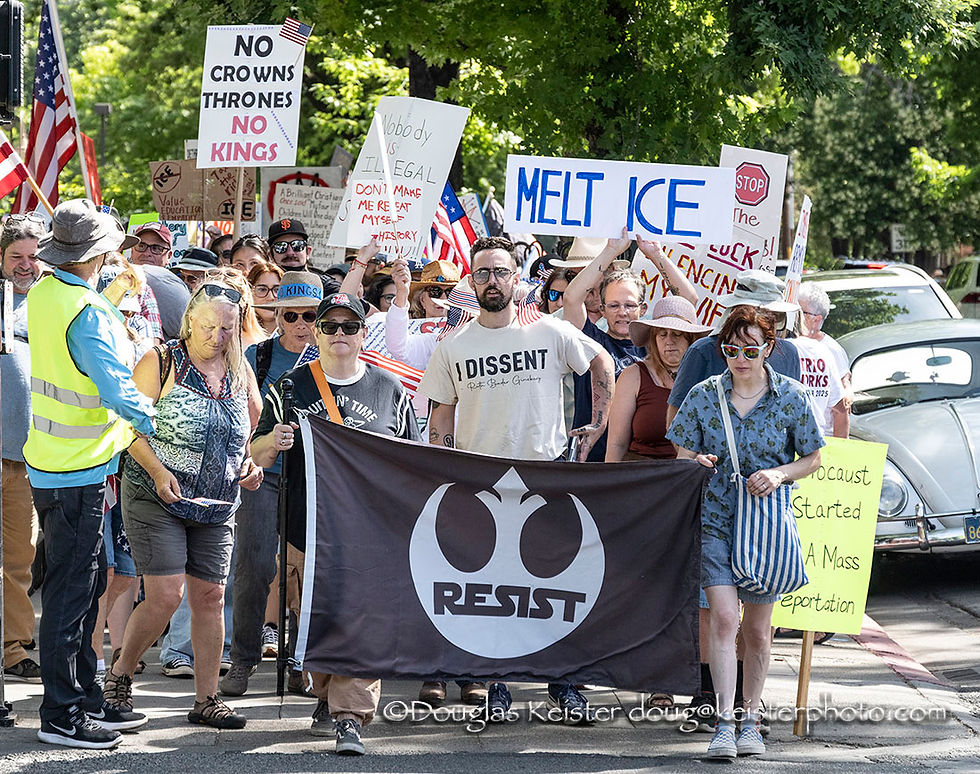Gerrymandering: What it is, How it Harms Us, and What We Can Do
- indivisiblechicote
- Aug 16, 2025
- 4 min read

Have you ever looked at a map of a congressional district and wondered why the lines are drawn in such strange, squiggly shapes? You might have seen districts that look like a long, thin ribbon or a bizarre creature stretching across multiple towns. The reason behind these odd shapes is often a practice called gerrymandering.
At its core, gerrymandering is the manipulation of electoral district boundaries to favor one party over another. It’s a tool used by politicians to choose their voters, rather than the other way around. This practice can have a profound impact on the fairness of our elections and the health of our democracy.
What is Gerrymandering?
Imagine you have a cake to slice for a party with two teams: blue and red. The goal is to make sure your team gets a bigger piece than the other. Gerrymandering is like cutting the cake in a way that gives your team a clear advantage. The term itself is a mashup of "Gerry," for a Massachusetts governor who signed a redistricting plan in 1812, and "salamander," for the bizarre shape of one of the districts on the map.
Political parties in power often use gerrymandering during the redistricting process, which happens after each ten-year census. They use data on where people live, how they vote, and their demographic information to draw district lines that secure more seats for their party.
How Do They Do It? The Two Main Methods
Politicians primarily use two techniques to gerrymander a district: packing and cracking.
Packing: This strategy involves "packing" a large number of a party's voters into a single district. The idea is to create one district where your opponent is guaranteed to win by an overwhelming margin. This means your opponent's votes in that one district are "wasted," because they don't help them win other districts. It also ensures that the surrounding districts will be easier for your own party to win.
Cracking: This strategy is the opposite. It involves "cracking" a party's voters by splitting them up and spreading them across multiple districts. For example, if a large group of voters for the opposition party lives in one neighborhood, those voters might be divided among three different districts. In each of those districts, their votes are diluted by a larger number of voters from the other party, making it very difficult for the opposition to win any of the three seats.
These two tactics are often used together to create districts that are not only safe for one party but also extremely difficult for the other to win.
Why Does Gerrymandering Matter to You?
Gerrymandering isn't just about politicians playing a game on a map; it has real, damaging consequences for citizens.
It Makes Your Vote Feel Less Powerful: When districts are "packed" or "cracked," the outcome of the election can be predetermined. Your vote may not feel like it truly counts, which can lead to voter apathy and a feeling of powerlessness.
It Creates Unaccountable Leaders: In a safe, gerrymandered district, an elected official knows they are unlikely to be challenged or lose their seat. This can make them less responsive to the needs and concerns of all their constituents, since they only need to appeal to a very specific, pre-selected group of voters.
It Increases Political Polarization: When districts are drawn to be safe for one party, there is no incentive for compromise or working with the opposition. Instead, candidates are often pushed to the extremes of their party to win the primary election, which is the only real competition they face. This makes our political system more divided and less able to solve problems.
It Silences Diverse Communities: Gerrymandering can be used to weaken the voting power of minority groups or specific communities of interest. By splitting up these communities, their collective voice is muted, and their ability to elect a representative who reflects their unique needs is diminished.
What Can We Do About It?
Gerrymandering is a serious threat to fair representation, but it's not a lost cause. Here are some ways you can get involved and help combat it:
Support Independent Redistricting Commissions: The most effective way to fight gerrymandering is to take the power of drawing district lines out of the hands of politicians. Independent commissions, made up of non-partisan citizens, can draw fair districts based on population and community lines, not political advantage.
Advocate for Reforms: Contact your state representatives and tell them you support legislation that promotes fair districting practices. Research and support local, state, and national organizations that are working to end gerrymandering.
Stay Informed and Spread the Word: Learn about the redistricting process in your state and share this information with your friends, family, and neighbors. A well-informed public is a powerful defense against political manipulation.
Gerrymandering is a complex issue, but understanding it is the first step toward fixing it. By raising awareness and advocating for a fairer process, we can ensure that our votes truly matter and that our elected leaders are accountable to all of us.








